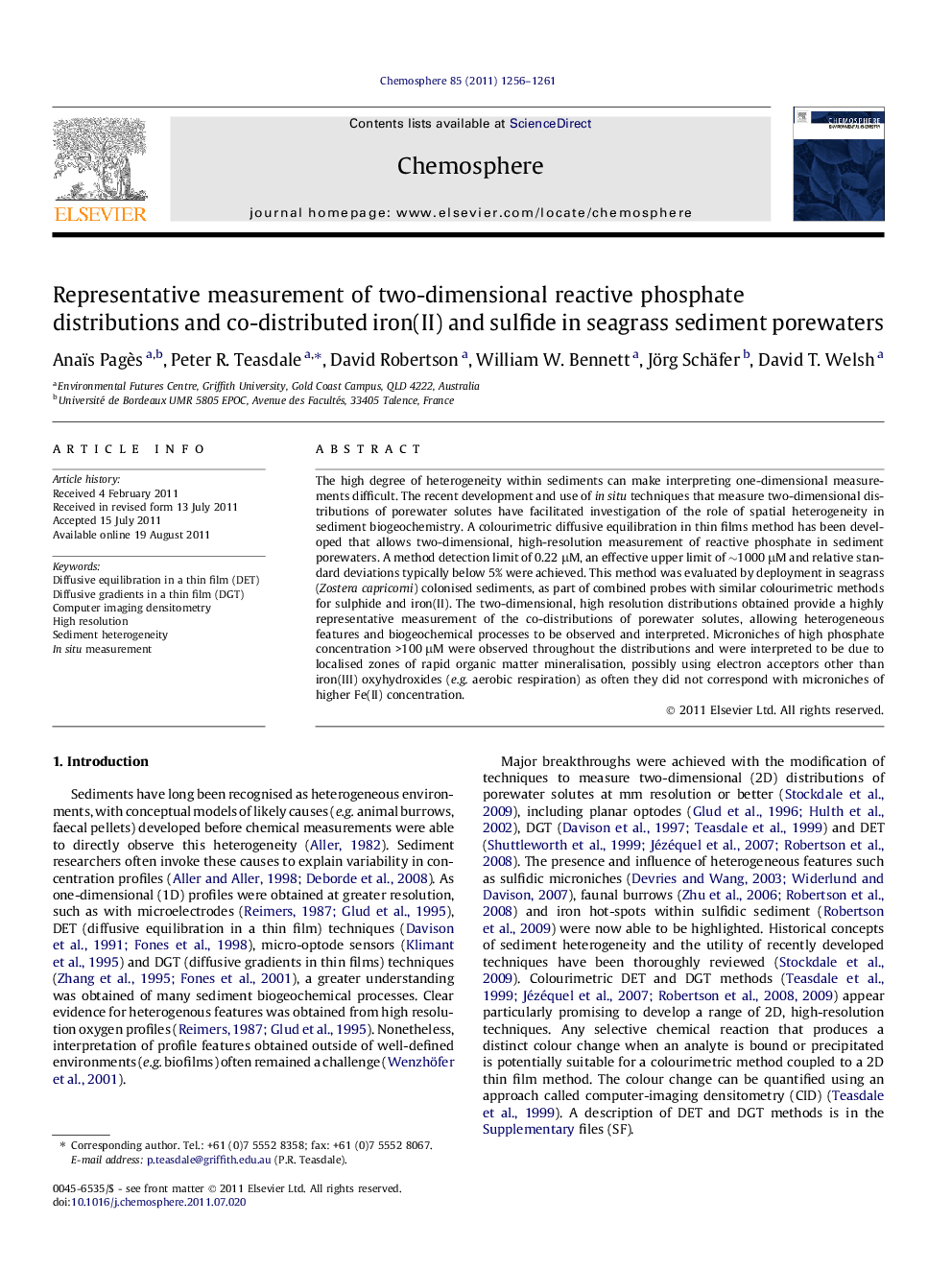| Article ID | Journal | Published Year | Pages | File Type |
|---|---|---|---|---|
| 4410113 | Chemosphere | 2011 | 6 Pages |
The high degree of heterogeneity within sediments can make interpreting one-dimensional measurements difficult. The recent development and use of in situ techniques that measure two-dimensional distributions of porewater solutes have facilitated investigation of the role of spatial heterogeneity in sediment biogeochemistry. A colourimetric diffusive equilibration in thin films method has been developed that allows two-dimensional, high-resolution measurement of reactive phosphate in sediment porewaters. A method detection limit of 0.22 μM, an effective upper limit of ∼1000 μM and relative standard deviations typically below 5% were achieved. This method was evaluated by deployment in seagrass (Zostera capricorni) colonised sediments, as part of combined probes with similar colourimetric methods for sulfide and iron(II). The two-dimensional, high resolution distributions obtained provide a highly representative measurement of the co-distributions of porewater solutes, allowing heterogeneous features and biogeochemical processes to be observed and interpreted. Microniches of high phosphate concentration >100 μM were observed throughout the distributions and were interpreted to be due to localised zones of rapid organic matter mineralisation, possibly using electron acceptors other than iron(III) oxyhydroxides (e.g. aerobic respiration) as often they did not correspond with microniches of higher Fe(II) concentration.
► A new colourimetric DET method for measurement of reactive phosphate is described. ► Colourimetric measurements provide 2D, high resolution distributions of phosphate. ► Colourimetric iron(II) and sulfide characterise sediment biogeochemistry. ► A new perspective of phosphate release in sediment is suggested.
